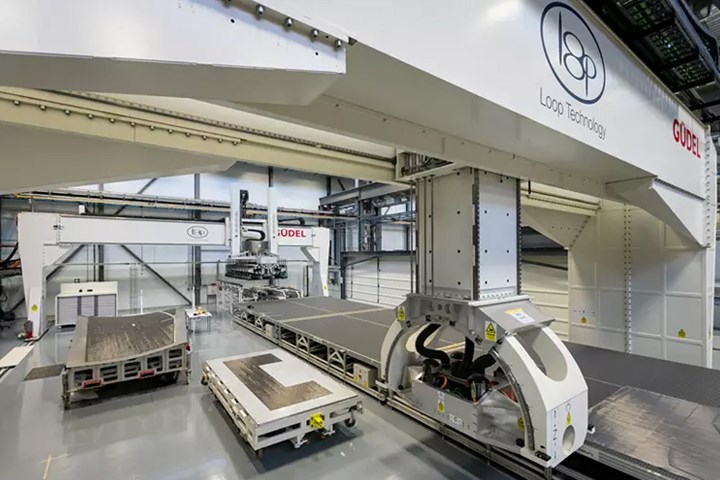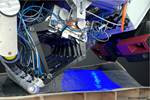Ultra high-rate composite deposition system trials to surpass layup targets
The NCC, alongside partners Loop Technology, Coriolis and Güdel, are on track to deliver dry fiber deposition rates exceeding 350 kilograms/hour, seven times more than standard aerospace rates.

Ultra high-rate composite deposition system (UHRCD). Photo Credit: NCC
National Composites Centre (NCC, Bristol, U.K.) engineers, researchers, software architects, industrialists and textile experts, in collaboration with Loop Technology (Dorchester, U.K.) Coriolis (Queven, France) and Güdel (Langenthal, Switzerland), have designed and developed an ultra high-rate composite deposition system (UHRCD) in an effort to significantly increase the deposition volume of composite materials during manufacture and meet the needs of next-generation large composite structures.
The industrial technology demonstrator, procured as part of the £36 million capability acquisition program (iCAP), funded by the Aerospace Technology Institute (ATI), is “capable of challenging product cost, weight and operational improvements,” and can provide flexibility “in the design and development of future structures” according to the NCC’s blog on the subject. Development trials have already proven that the system is on track to delivering a dry fiber deposition rate in excess of 350 kilograms/hour, surpassing the project team’s original 200-kilogram/hour goal. The NCC compares these numbers to the 50 kilogram/hour standards known to aerospace automated fiber placement (AFP) volumes for large structures.
Additional development trials have been conducted to increase the positional accuracy and rate of deposition for noncrimp fabrics (NCFs). Some trials have also been conducted as part of the Wing of Tomorrow (WOT) project (learn more about that at the NCC website).
The system, provided by Loop Technology, has five different heads that can be used in an integrated way to cut, lift and place dry fiber materials in accordance with design requirements, giving the team options to address different industrial challenges. For example, the dry fiber placement (DFP) head can deposit material from a single, 38-millimeter-wide slit tape up to eight strips in a single pass and Loop Technology’s FibreFORM head can deposit material up to 4 meters wide and manage a ply shape down to a knife point. The NCC believes this has the potential to dramatically reduce the number of fabric pieces required — speeding up production time and reducing costs.
Related Content
-
German UniFix project develops mobile holding fixture to enhance production efficiency of large CFRP structures
Fraunhofer IFAM and Airbus Operations in Stade demonstrate reduced manual handling and non-productive time in flow-oriented manufacturing of vertical tail plane.
-
Broetje-Automation works with Boeing Germany, consortium in “Shimless Assembly” project
Foundation for future aircraft programs aims for -75% manufacturing time, -25% cost via end-to-end digitization, tolerance compensation and force-controlled joining.
-
Siemens Gamesa, Airborne collaborate on automation of wind turbine blades
Joint efforts combine years of expertise in the manufacture of wind turbine blades, composite processing and automation to scale up operations.









.jpg;maxWidth=300;quality=90)


